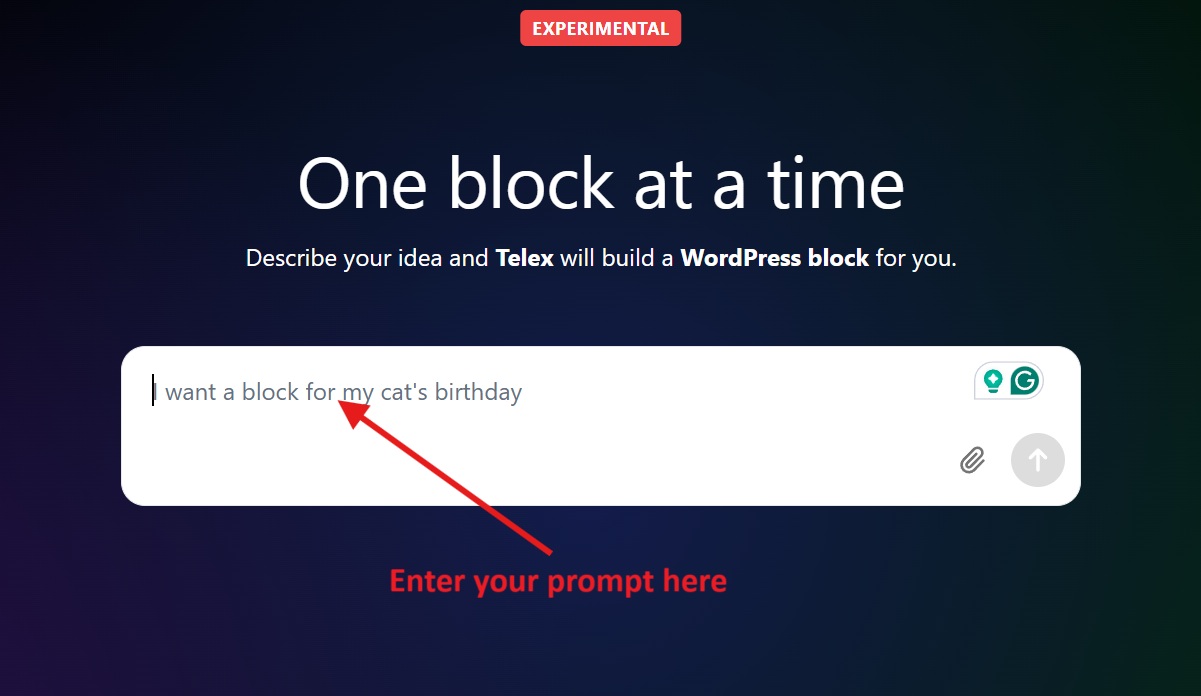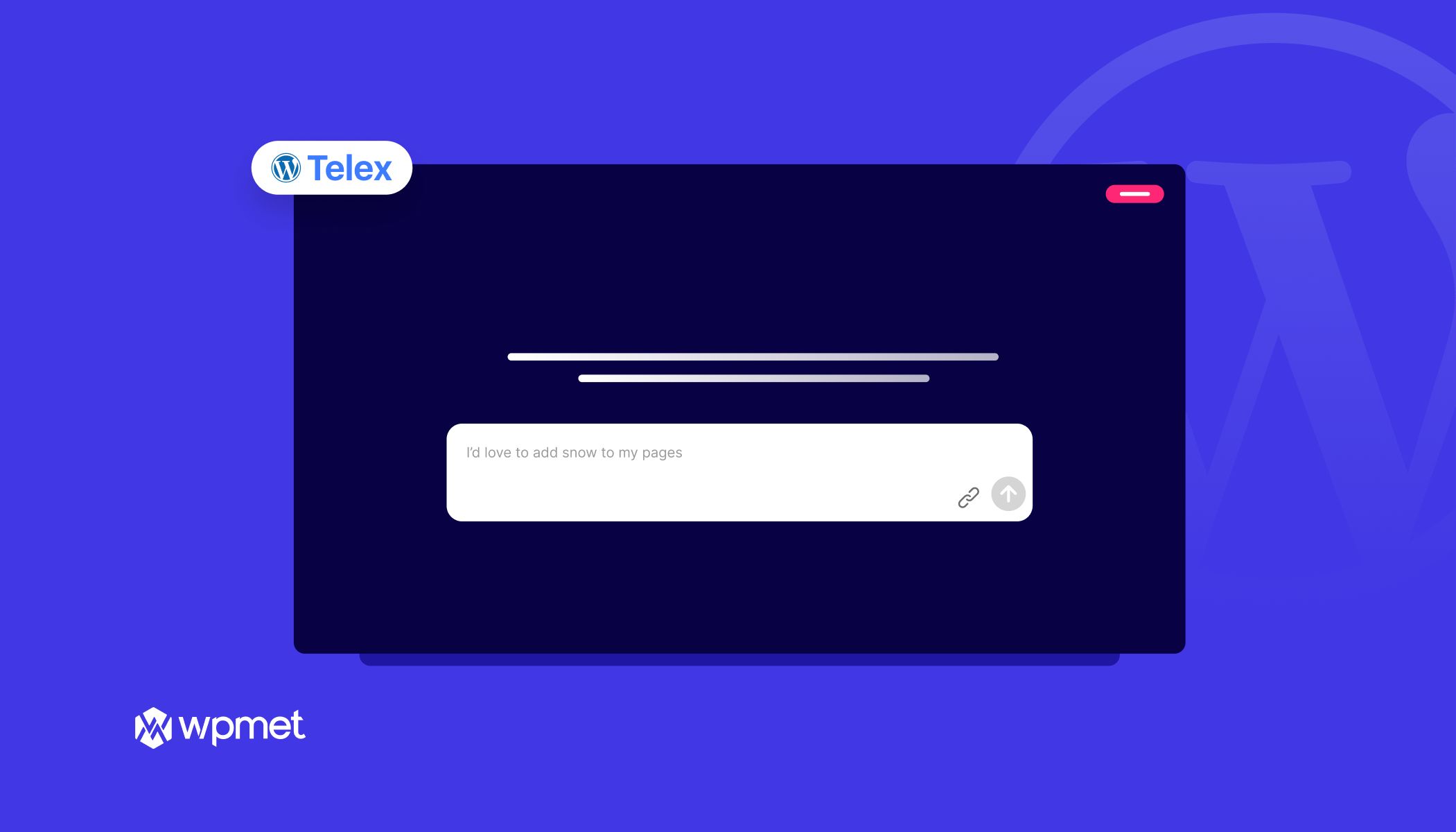Telex, WordPress’s latest experimental tool, may mark a turning point in fast-evolving website building. Announced at WorldCamp US 2025 by co-founder Matt Mullenweg, Telex promises to bring AI-powered website creation to a wider audience.
Here’s a quick look at what Telex is, how it works, its features, and its role in website building.
Quick Overview
This blog post introduces Telex, WordPress’s latest experimental AI tool announced at WordCamp US 2025. Telex lets you create functional Gutenberg blocks from simple natural-language prompts—no coding required.
Highlights:
✅ What Telex is and how it fits into WordPress’s broader move toward AI-powered website building.
✅ How the tool works: from typing a prompt to downloading a ready-to-install Gutenberg block.
✅ The key features—natural-language generation, Gutenberg-aware output, sandbox testing, and portable .zip packaging.
✅ The current limitations—best for prototyping, not yet for complex sites or advanced integrations.
Whether you’re a WordPress beginner, designer, or marketer, Telex represents a bold new way to experiment with AI-assisted workflows. By the end, you’ll know exactly what Telex can (and can’t) do, and why it may mark a turning point in the future of website building.
What is Telex?

Telex is an experimental tool from WordPress designed to convert plain natural-language prompts into functional Gutenberg blocks. These are modular building pieces in WordPress sites, like hero sections, image galleries, animated counters, call-to-action buttons, and more.
Instead of writing code, designing CSS/JS, or manually assembling parts, Telex simplifies the process. Users can describe what they want in English, and the tool will generate the corresponding block.
Here are some key contextual points:
➡️ Telex is still in a prototype or experimental status.
➡️ Telex is one of WordPress’s flagship projects towards integrating AI capabilities deeply into the WordPress ecosystem.
➡️ The focus is less on generic code generation and more on creating things that “fit well” into the WordPress/Gutenberg world, respecting themes, block architecture, WordPress best practices, etc.
How does Telex work?
Telex works by turning the prompts into downloadable, installable block packages, following these workflows:
1. Prompt input
Simply type a description of what you want, what the block should look like, what functionality it should have, what visual style, interactions, etc. For instance, we’ll request Telex to create an Ingredient List Block using this prompt:
“Create an Ingredient List block. It should display a list of ingredients that users can check off. Add a ‘Copy to clipboard’ button. Also include a scaler so readers can choose to double (2×) or triple (3×) ingredient quantities. In the editor, allow adding, removing, and reordering ingredients (columns: quantity, unit, ingredient).”

2. AI processing
The AI interprets the prompt to derive structural requirements (HTML skeleton/block registration code), styling (CSS), possible interactions (JS), and WordPress integration (PHP hooks, filters) as needed. It tries to maintain compatibility with Gutenberg, themes, standards, etc.

3. Generation of block package
The result is packaged into a .zip file that includes everything you need: PHP files, CSS styles, JS elements if required, and instructions. This is so you can deploy it directly into a WordPress site or test in a sandbox environment like WordPress lekplats.

If you want to see what your new block looks like in the frontend, you can simply click frontend.

4. Iteration
The first version of a block may not be perfect since Telex is still in the experimental phase. You could then refine via follow-up prompts like, “Make the styling inherit my theme’s fonts and colors,” “When all ingredients are checked, show a confetti animation,” and “Format quantities as fractions instead of decimals.”
5. Installation/Testing
The generated block is downloadable and will be stored as a zip file. You can upload the file to your WordPress site (or use Playground) to test, refine, and integrate.

To upload the file, simply navigate to your site’s dashboard and proceed to Plugin and add New plugin. Upload the file from your browser’s library and install it. Make sure to activate the plugin.

Now, open any post or page for editing. Click the “+” Add Block button and search for “Ingredients List” to add it to your post or page.

Some further implementation details:
- Telex’s interface is minimal and does not require a complex setup. It is accessible via a web domain (telex.automattic.ai).
- It uses a sandbox/playground environment for testing and trial. This helps avoid breaking the live site.
- The tool is built to understand the nuances of WordPress development, like editor vs front-end behavior, block registration, responsive design, etc.
What are the features of Telex?
Here are the main features and current limitations of Telex:
Current Limitations
While promising, Telex is not without its challenges or limitations. Here are some that are currently known:
😟 Telex often falls short in e-commerce, membership systems, backend logic, advanced database queries, and custom integration with third-party services because it might produce incomplete or non-functional blocks.
😟 Sometimes styling or behavior may conflict with existing themes or break in certain browser environments.
😟 Generated code may need manual adjustments, debugging, and fixing edge cases to ensure responsive behavior, security, etc.
😟 It requires a well prompt. Vague or ambiguous instructions might produce worse results.
Slutlig tanke
Telex represents a bold step forward in the ongoing evolution of website building. It promises much easier website building, especially for users without deep technical skills, through simple language.
However, it’s important to keep expectations grounded. Telex is experimental, with limitations especially around complexity, consistency, and integration. For now, Telex is limited to prototyping and experimentation.
Nevertheless, Telex is worth trying. It may not yet replace the need for coding, but it can lead towards more natural, conversational, and AI-assisted workflows.



Lämna ett svar